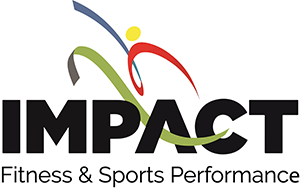Opening a sports performance facility wasn’t always on my radar. I lacked experience in running a business, and the whole idea felt daunting. Looking back on the past decade, however, it’s been a journey filled with ups and downs, valuable lessons, and overcoming challenges. These experiences have surprisingly translated well into the world of strength and conditioning, and while I still have much to learn, I would like to share some key takeaways:
- Growth Mindset Matters: Both in business and training, a positive and adaptable mindset is crucial. Embrace possibilities and challenges, and avoid getting stuck in a fixed way of thinking. In strength and conditioning, I am always weary of coaches who claim this is the only way an athlete should and will train, because everyone is different. While every athlete should know how to perform the foundational movements, how they get there will be different. Rather than thinking that’s not the way we do things, it may be better to have the mindset that strategies are meant to be serviceable, not sacred. I encourage this mindset with anyone I have the opportunity to coach and work with.
- The Power of Optimism: Setting goals and reframing challenges are essential for progress. Learned optimism starts with setting goals and how to navigate to get to Point A from Point B. This reframing also begins with the idea that our current conclusions about a situation are not the only possible formulation. I think one thing I often hear is that “I don’t have enough time to train consistently.” While that may be the case, one must be aware that the mind is constantly trying to find ways to find comfort, and as coaches it is our job to help our clients navigate through this. Not only is having the mindset that says “I don’t have enough time” a fixed mindset, but it will also indefinitely lead to lack of action. Rather, it may be wise to be aware of how constraints liberate more than they limit.
- Embrace Creativity: Ask questions, propose new ideas, and don’t be afraid to push boundaries. Creativity is key to solving problems and achieving optimal results. To think creatively, you must be willing to ask the questions no one else is willing to ask, whether that be to yourself or someone you trust. You must be able to propose the ideas others are too timid to voice or take the actions that frighten others into passivity. What I have found is that if you mix this concept in with love, it is typically received well. A neuropsychologist, Elkhonon Goldberg, describes this as, “Propensity toward nonconformity is certainly not a sufficient prerequisite of creativity but is arguably a necessary one.”
- Strong Systems Lead to Success: Whether it’s business operations or training plans, having strong systems in place is essential. Effective systems free up your time and energy for growth. When we push beyond the boundaries of what is thought to be possible, our minds begin to make new connections, write better stories, and achieve unexpected results. This doesn’t always mean go harder. You could be going hard, and simply have a poor plan. Rather, it may be wise to work harder on the systems so that the plan can be followed diligently.
- Learn from Feedback: In the days of my coaching athletes, we have been given compliments, criticism, and unsolicited advice. Over the years, I have learned to take the words given and reflect on them. Rather than take it personally, I always ask myself if the information given can improve the situation at hand, or the given system that we currently have. What source the information is coming from is also important.
- Lifelong Learning: The world of strength and conditioning is constantly evolving. Be open to unlearning outdated information and embracing new discoveries to stay ahead of the curve. Being able to learn, unlearn, and relearn concepts is critical for growth for oneself and the people you serve. One reason why systems need to be constantly updated is because new information is constantly being delivered. Properly Educating oneself and having good reasoning is first and foremost most important in this manner, but also having the ability to unlearn what you were taught and relearn information that might contradict something that has been proven wrong otherwise.
Science Informs Practice: The Case of Biotensegrity.
A great example of continuous learning is the concept of biotensegrity. For a long time, Newtonian Law was the foundation for understanding how force is produced in the body. However, biotensegrity offers a more nuanced perspective.
Here’s a quick recap of Newtonian Laws:
- First Law (Law of Inertia): An object at rest stays at rest and an object in motion stays in motion unless acted upon by an unbalanced force.
- Second Law: The acceleration of an object is directly proportional to the net force acting on it and inversely proportional to its mass.
- Third Law (Law of Action-Reaction): For every action, there is an equal and opposite reaction.
While Newtonian Laws are valuable, biotensegrity highlights the importance of fascia, the connective tissue that surrounds muscles. This interconnected system plays a crucial role in stability and force transfer. Understanding this allows us to design training programs that go beyond simple lifting and incorporate elements like effective speed training for optimal results.
This is just one example of how staying up-to-date with the latest advancements can improve your approach as a coach. By applying the lessons learned throughout this journey, you can create a winning formula for both your business and your athletes
